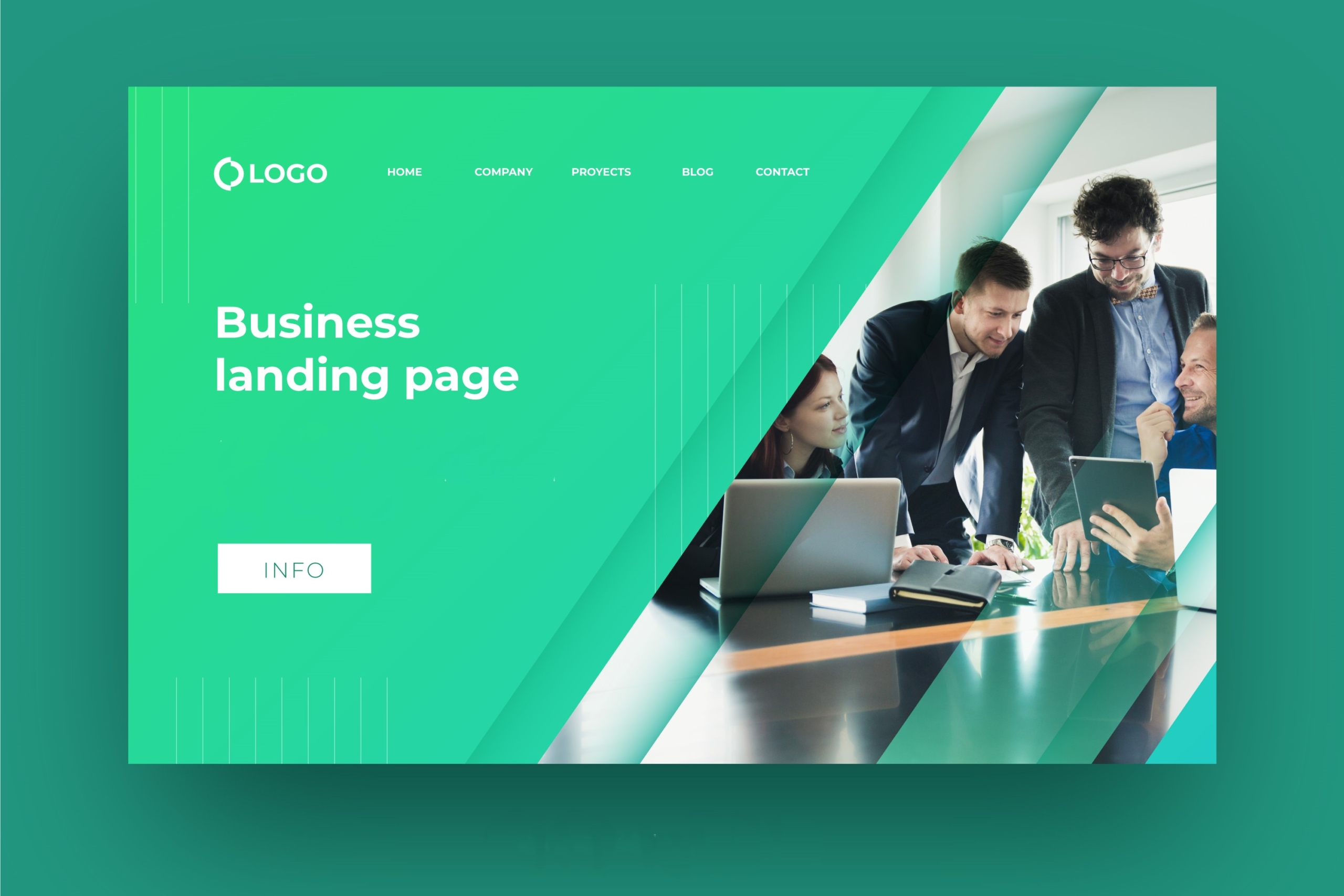How to Optimize Your Landing Pages for Higher Conversion Rates
Overview of The Power of Landing Page Optimization
In the digital world, landing page optimization is a superpower for business success. A well-tailored landing page can turn curious visitors into loyal customers. It’s like a magic key that unlocks strategies for higher conversions. Let’s explore how landing page optimization works and why it’s so essential in the world of online marketing. Get ready to discover the secrets that can make your website visitors not just stay, but take the actions you want them to!
The Central Role of Landing Pages in Conversion Funnel Success
Landing pages act as the bridge between your marketing efforts and actual conversions. They’re like the navigators, guiding visitors through your website journey, turning them from curious onlookers to actual customers. Picture them as the essential puzzle piece that ensures your visitors not only stay interested but also take the actions you want whether it’s making a purchase or signing up. grasping how landing pages fit into this journey is vital for transforming potential customers into satisfied ones.
How to Optimize Your Landing Pages for Higher Conversion Rates
Responsive landing page designs work better by keeping things simple. Write a clear message that talks to users and use an interesting headline to get their attention. Keep the design neat and easy to use for a smooth experience. Put a strong and clear “click here” button to make people act fast. Think about mobile users, as lots of people use phones to visit websites. Make forms short and only ask for what’s really needed. Show off good feedback or trust badges to build trust. These ideas make your pages friendly and trustworthy, so more people will likely do what you want them to do.
Creating Detailed Buyer Personas
To create detailed buyer personas at our digital marketing agency in Mumbai, we gather info on who your audience is – their age, habits, and preferences. Understand their challenges and goals, so you can adjust what you offer. Use real stories to make it relatable. Keep updating these personas based on changes or feedback. This helps you tailor your marketing and products to connect better with your audience.
Analyzing User Behavior and Preferences
To analyze user behavior and preferences at our PPC company In Mumbai, Digimanic we involve studying how individuals interact with a product or service, identifying patterns in their choices and actions. This data-driven approach helps businesses tailor offerings to meet customer needs, enhance user experience, and optimize marketing strategies. By leveraging insights into user behavior, organizations can make informed decisions, improve customer satisfaction, and stay competitive in dynamic markets.
Ensuring Consistency Between Ad Messaging and Landing Page
Ensure harmony between your ad and landing page. Align the language and content relevance for conversions of your ad with what users find on the landing page. Deliver on the promises made in the ad to create a smooth and trustworthy experience. When there’s coherence between your ad messaging and optimal landing page design, users are more likely to engage and take the desired actions. Consistency in your marketing approach enhances the overall effectiveness of your campaign.
Tailoring Content to Address Specific User Queries
Customizing content to answer user questions is key for a personalized experience at a landing page. By recognizing user needs, content creators can provide information that directly addresses queries, boosting satisfaction and engagement. Analyzing data and feedback refines content strategies, ensuring information aligns with user intent for more meaningful interactions.
Designing Attention-Grabbing CTAs
Designing attention-grabbing CTAs involves crafting prompts that quickly catch people’s attention. By using compelling language and visually appealing elements in strategic locations, businesses can guide users to take desired actions, such as making a purchase or signing up. When the message is clear and the design is well-executed, CTAs stand out, prompting users to engage promptly.
A/B Testing CTAs for Effectiveness
Conducting A/B testing for CTAs involves trying out different words or designs to see which version works better. This comparison helps businesses determine which CTA prompts more user action, such as clicks or purchases. By identifying the most effective approach through testing, companies can optimise their CTAs to improve overall performance and enhance user engagement.
Creating a Clean and Intuitive Design
Creating a clean and intuitive design means making things look neat and easy to use. It’s like organising a room so everything is in the right place and simple to find. A website or app with a clean design is like a tidy room. Finding what you need and understanding it is simple. This helps people use it without any confusion, making their experience enjoyable and straightforward.
Mobile Responsiveness for Seamless User Experience
Making a website mobile-friendly means it works well on phones and tablets for an easy user experience. When a site is mobile-responsive, it adjusts to different screen sizes, making it simple to use on smaller devices. This is important because many people use phones to go online. By ensuring mobile-friendliness, businesses make it easy for users to access information or services smoothly, no matter the device they’re using.
Enhancing Page Load Speed for Better User Experience
Improving page load speed is all about making websites load faster for a better user experience. When a website loads quickly, users don’t have to wait, and they can access information or services faster. This enhances their experience because it’s smoother and more efficient. Businesses optimize page speed by using techniques like compressing images or streamlining code. The goal is to provide users with a snappy and responsive website, keeping them engaged and satisfied.
Compressing Images Without Compromising Quality
Compressing images without compromising quality is like making picture files smaller without making them look worse. It’s important for websites because smaller image files load faster, improving the site’s speed. Businesses use special techniques to reduce file sizes while keeping the pictures clear and sharp. This ensures that websites load quickly, providing a better experience for users who can enjoy high-quality images without delays.
Implementing Lazy Loading for Multimedia
Lazy loading for multimedia is a clever way of showing pictures and videos on a website. Instead of loading everything at the start, it loads them only when you scroll to that part of the page. It’s like revealing pictures one by one as you scroll down, making the webpage load faster. This trick helps websites with lots of pictures and videos work better because it speeds up how quickly the page appears for you.
Reducing Unnecessary Scripts and Plugins
Getting rid of unnecessary scripts and plugins means removing extra computer code that a website doesn’t really need. It’s like cleaning out your backpack and only keeping the things you use every day. For websites, fewer scripts and plugins mean faster loading times because there’s less digital stuff to process. This helps users access the website quicker and have a smoother experience, almost like decluttering to make things work more efficiently.
Showcasing Testimonials and Reviews
When businesses showcase testimonials and reviews, it’s like sharing stories from happy customers. They talk about their good experiences with a product or service. It’s a bit like when you hear your friends saying they really liked something. By showing these positive comments, businesses are saying, “Hey, other people loved this, and you might too!”It increases your confidence in their quality offerings and gives you the courage to test it out for yourself.
Highlighting Security and Privacy Measures
Making a big deal about security and privacy is like showing off the strong locks on your digital doors. Businesses do this to assure you that your personal details are safe with them, just like keeping your secrets in a well-guarded box. When they emphasize these measures, it means they’ve taken extra steps to protect your information. It’s like saying, “Relax, your data is in good hands; we’ve taken all the necessary precautions.”
Crafting Compelling Headlines and Subheadings
Crafting compelling headlines is vital for engaging readers. Be clear and concise, delivering the main idea succinctly. Generate curiosity by posing questions or creating mystery. Utilize powerful words that evoke emotions and action. Highlight the benefits to clearly communicate the value readers will gain. A well-crafted headline entices readers to delve into your content, setting the stage for a positive engagement.
Creating Headlines That Capture Attention
Making catchy headlines is crucial for people noticing your content. Begin with clear and simple wording to get your main point across. Create interest by asking questions or adding a bit of mystery. Use strong words that bring out emotions. Focus on the good stuff readers will get from your content. A good headline grabs attention and makes people want to read more.
Subheadings That Reinforce Key Messages
Creating good subheadings is important to reinforce your main messages. Keep them short and connected to your main points. Use them to give more information or break down complex ideas. Make sure they fit well with your headline and guide readers through your content in a logical way. Use subheadings to highlight important details and main ideas. Good subheadings make your content easier to read and emphasize the key messages.
Communicating the Value of the Offer
Expressing the worth of your offer is crucial. Clearly convey the benefits and advantages it provides. Use straightforward language to highlight the positive outcomes or solutions customers can expect. Emphasize how your offer meets their needs or solves their problems. Communicating the value effectively builds understanding and interest, encouraging people to engage with your product or service.
Addressing User Pain Points and Needs
To help users understand their problems and desires. Show how your product or service solves their issues or meets their needs. Use friendly language, connect emotionally, and highlight the positive impacts of what you offer. By addressing their concerns directly, you build a stronger connection and make them more likely to engage with your offering.
Continuous Testing and Iterative Improvement
Continuous testing and iterative improvement are pivotal in software development. This dynamic process involves regularly assessing code through automated tests, allowing for early bug detection and rapid deployment of enhancements. Iterative cycles of testing and refinement ensure that software evolves seamlessly, meeting evolving requirements. This iterative approach not only enhances product quality but also fosters adaptability to changing needs, promoting a responsive and efficient development lifecycle.
A/B Testing Different Landing Page Elements
A/B testing involves comparing two versions (A and B) of a landing page by changing specific elements like headlines, images, or buttons. Users are randomly shown one of the versions, and their interactions are analyzed to determine which performs better. This method helps businesses make data-driven decisions, optimizing landing pages to enhance user engagement and achieve specific goals like improved conversion rates or increased user satisfaction.
A/B testing proves to be a valuable strategy for refining and optimizing landing pages. By systematically comparing different elements, businesses can make informed decisions to enhance user experience and achieve specific objectives. This data-driven approach not only does conversion rate optimization but also allows for continuous refinement based on user behavior. Ultimately, A/B testing empowers organizations to make informed, effective choices in designing landing pages that resonate with their audience and drive desired outcomes.





There are no comments